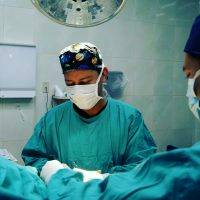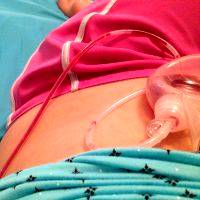Breast Reduction Q&A
Here you can find answers to the most frequently asked and popular questions about breast reduction. We regularly add new questions and answers and try to give the most accurate and truthful answers to these questions.
We ask the professional surgeons the most difficult questions that require good medical knowledge. The list of questions is at the bottom, first a brief information about the operation. You can also ask us your questions.
Breast reduction surgery
Excessive pressure of enlarged mammary glands on the chest worsens posture, forms a stooped back, causes pain.
The goals of breast reduction.
What problems can be solved with the help of breast reduction?
– Reduce volume;
– Improve the shape of the breast;
– Reduce pain in the spine;
– To facilitate medical and radiological examination of the mammary glands.
How to prepare for breast reduction?

Questions To Ask Your Breast Reduction Surgeon
- The patient should be healthy (no cold or other illnesses during this period).
- It is necessary to undergo examination (blood, urine, sugar, ECG, fluorography of the chest, conclusion of breast physican oncologist, gynecologist), as well as an anesthesiologist. If you smoke, you should quit smoking at least 2 weeks before the operation and refrain from smoking after it for at least 2-3 weeks.
Otherwise, the risk of wound healing is sharply increased due to the fact that smoking significantly reduces the flow of blood into the vessels of the skin.
If you are taking any medications, you should discuss the permissibility of this with your doctor at a preliminary consultation.
What anesthesia is used for breast reduction?
The operation is performed under general or local anesthesia, depending on the wishes and general condition of the patient.
You will be placed in the clinic on the day of surgery and will pass a short preparation for it. The essence of the operation is to move the nipple-aureolar complex up, with simultaneous movement of the breast tissue and excision of excess skin and gland.
In connection with the fact that there is a different degree of ptosis of the mammary glands, differences in the volume of glandular tissue, various operating procedures have been developed and are being applied.
Therefore, after the operation, different arrangement of scars in different patients is possible.
Scars are always located around the areola, in some cases it goes down to the pectoral fold (vertical scar), in other situations – an additional scar is located in this fold and resembles an anchor or an inverted “T”.The exception is when the nipples are in the correct position, but there is a sagging of the glandular tissue. Then the surgical scar can be located in a pectoral fold. As a rule, surgical wounds are drained by special “tubes”, these drains are removed 1 to 2 days after the operation.
The duration of the operation is an average of 1.5 – 3 hours (depending on the complexity). After the operation, the breast is bandaged with elastic bandages to reduce the risk of postoperative complications, improve the conditions for the formation of newly “created” mammary glands. In the following, bandaging is replaced by wearing special underwear.
Postoperative period.
The course of the postoperative period is characterized by a number of features:- After surgery, permanent scars will remain on the skin, their quality can not be fully predicted before surgery, as the processes of scar formation are individual;
- The ideal symmetry of the nipples, areola and mammary glands can not be achieved, although the desire for this is one of the tasks of the operation;
- Surgery reduces the possibility of breastfeeding;
- The sensitivity of the nipples, areola and mammary glands, as a rule, decreases with subsequent slow improvement, in some cases it is completely lost;
- This operation has no effect on the incidence of breast cancer;
- Swelling and hemorrhages can persist in the area of the operation for several weeks, will pass several months before the moment when the breast after the operation takes its final shape.
- The patient must be in the clinic after the operation for 3 to 5 days. Sutures from postoperative wounds are removed on the 7th – 14th day.
- The time, when the patient starts to work is determined by his state of health. Usually, light housework is possible after 5-7 days, usually the rehabilitation period is 2 weeks.
After the operation it is necessary to wear special underwear (bra) for 1.5 – 2 months, in order to support and form the mammary glands. The final formation of the mammary glands occurs 3-4 months after the operation.
What are possible complications of breast reduction?
After the operation, it is possible to develop any general surgical complications (wound suppuration, bleeding, thrombophlebitis, thromboembolism, formation of keloid scars, etc.).In very rare cases, after the operation, the blood supply to one or two nipples and areola may become insufficient, leading to partial or complete necrosis (necrosis). This complication may require a later reconstruction. The result of the operation is a beautiful tightened breast.
Photos of patients Before and After can be found in the “Photo Gallery”, and the approximate cost of services can be found in the “Cost” section.
Frequently asked Questions.
Question: What tests are required for breast reduction surgery?
Lab examination before the procedure / operation you can take in our clinic, or at the place of residence, depending on the type of anesthesia. If the operation is performed under general anesthesia, then the following tests should be taken:- General blood and urine tests.
- Blood test for sugar.
- Blood type and Rh factor.
- Coagulogram (blood for clotting).
- Biochemical blood test.
- A blood test for the Australian antigen, hepatitis C, HIV.
- Wassermann reaction (WR).
- Electrocardiogram.
- The conclusion of the therapist.
- Fluorography.
- Examination of the gynecologist.

6 Month Post Operative Breast Reduction By Dr. Norman G. Morrison, MD, FACS, New York Plastic Surgeon
- The general analysis of a blood (with the formula) + thrombocytes.
- Blood test for sugar.
- Blood coagulability.
- A blood test for the Australian antigen, hepatitis C, HIV.
- General urine analysis.
- Blood type.
- Fluorography.
- Electrocardiogram.
Question: Is It Possible To Breastfeed After Breast Reduction Surgery?
Breastfeeding after such an operation can be difficult. That is, in the case of the birth of a child after an operation, it is most likely that artificial feeding will be necessary.

24 Year Old Man Treated With Breast Reduction By Dr Siripong Prasertsuntarasai, MD, Thailand Plastic Surgeon
Question: How long does it take to recover from breast reduction surgery?
The first three days after the reduction mammoplasty is best spent in the hospital. Sutures are removed after 14-16 days, but you can return to work in a week, if this is really necessary.
The most important thing is to observe the prescribed regime and adhere to the limitations agreed with the surgeon so that the recovery can last without complications.
Question: How will the nipples look after surgery?
Breast reduction is always accompanied by the movement of the nipples to a new position – so that your “new” breasts look proportional and aesthetic. Due to the fact that the nipple moves along with the skin flap and the vessels feeding it, the sensitivity of the nipples is preserved. The shape of the flap and its size depends on the original shape of the breast and the effect you want to achieve.Question: Where are the incisions located after breast reduction surgery?
There are two options of incisions for breast reduction surgery:
- Vertical – the incision passes around the areola and descends downwards, to the breast fold;
- Anchor – the incision skirts around the areola, descends and passes in the pectoral fold.
The second option is usually used when there is a need for a radical reduction in the volume of the mammary glands.
Question: Is it true, that breast reduction can only be performed under general anesthesia?
Yes it is. General anesthesia is used to perform an operation to reduce mammary glands. This is explained by the fact that this type of intervention is quite extensive and complex: the operation lasts from 2 to 3 hours, involves the mobilization of tissues on several levels and the complex work with nerves and vessels.
Breast reduction questions and answers:
- What Does Mastopexy Involve? Breast lifting is advised for reducing the size of areolas, which have become enlarged over time. What breast lift surgery cannot do is do is significantly change the size of your breasts. Because of this,...read more
- Can Breast Reduction Be Done With Liposuction? Multiple procedure depends on your health status Breast reduction and liposuction are generally considered safe procedures that can usually be combined. In fact, liposuction of the lateral chest wall is often done in conjunction with...read more
- When Can I Workout After Male Breast Reduction Surgery? It depends upon the extent of the surgery. If all you have is liposuction or laser assisted liposuction then three weeks should be enough time. Also it depends upon what you mean by “workout”. If...read more
- Do Pills For Gynecomastia Work? Plastic Surgeons Opinions No, there are no medications which will reduce the size of your chest. However, if the gynecomastia is based upon an endocrinological disorder, then treatment of the underlying medical condition should improve the appearance of...read more
- What Is Gynecomastia? Gynecomastia is a condition in which breasts develop in a man. It is considered to be the development of abnormally large breasts in a man. This condition might occur in puberty, in fact, it is...read more
- How Much Gynecomastia Surgery Cost? Cost varies from $3000-$5000 for unilateral to $6000-$10000 for bilateral. Depends on the procedure being done,the complexity of the problem and the experty and experience of the surgeon. It is your body and you should...read more
- What Is In Alexia Breast Reduction Pills? Is surgery the only way to escape large breasts and the inconveniences they bring? Fortunately, not anymore. Breast reduction pills are now available by Alexia to reduce the size of breasts safely and economically. Some...read more
- How Much Does A Breast Reduction Cost On Average? The average cost in NY is between $10,000 and $12,500 depending on the length of surgery and facility charges. However, before assuming that your insurance will not pay for the procedure, do your homework. Research...read more
- Does Exercise Improve The Symptoms Of Large Breasts? There is no evidence to support the theory that exercising the chest muscles will do anything for breasts that are symptomatic (i.e., neck pain, back pain, shoulder grooving, intertriginous rashes) and need a reduction. Exercise...read more
- Is Gynecomastia Surgery Permanent? The results after gynecomastia surgery are usually permanent unless you: gain a great deal of weight after surgery take certain medications or drugs that promote regrowth have an underlying condition causing the gynecomastia which was...read more
- Can You Reduce Breast Size Through Exercise? Exercise Has Minimal Effect on Breast Size There are no exercises that can have a significant effect on the size or shape of the breasts. Exercise can improve muscle tone of the chest wall muscle...read more
- What Is The Recovery Time For A Breast Reduction? Breast reduction surgery tends to have a high patient satisfaction rate. Not only are you able to eliminate symptoms such as neck and back pain in many cases, but also benefit from the aesthetic outcome....read more
- Can You Get A Breast Reduction Without Scars? There are, unfortunately, no ‘scar-less’ options currently available for patients wishing to undergo a breast reduction or breast lift procedure. Oftentimes large breasts are associated with breast ptosis or droop, poor cosmetic appearance, difficulty wearing...read more
- What Is Involved In Breast Reduction Surgery? During breast reduction surgery, incisions are made around the pigmented nipple-areolar complex and extend vertically below the nipple and within the crease under the breast. The nipple-areolar complex is moved upward to the desired location....read more
- Do You Lose Nipple Sensation After Breast Reduction? Sensation of the nipple is carried by specialized small branches of the 5th rib (intercostal) nerve. The vast majority of large breasted women have poor to no sensation in the nipple and areola due to...read more







